MICROSCOPE-ANTIQUES.COM © 2013-15.
ULTRA-LOMARA MICROSCOPE
c. 1935
Maker: Goerz, Germany
Serial Number:None
MODEL: ULTRA-LOMARA MICROSCOPE
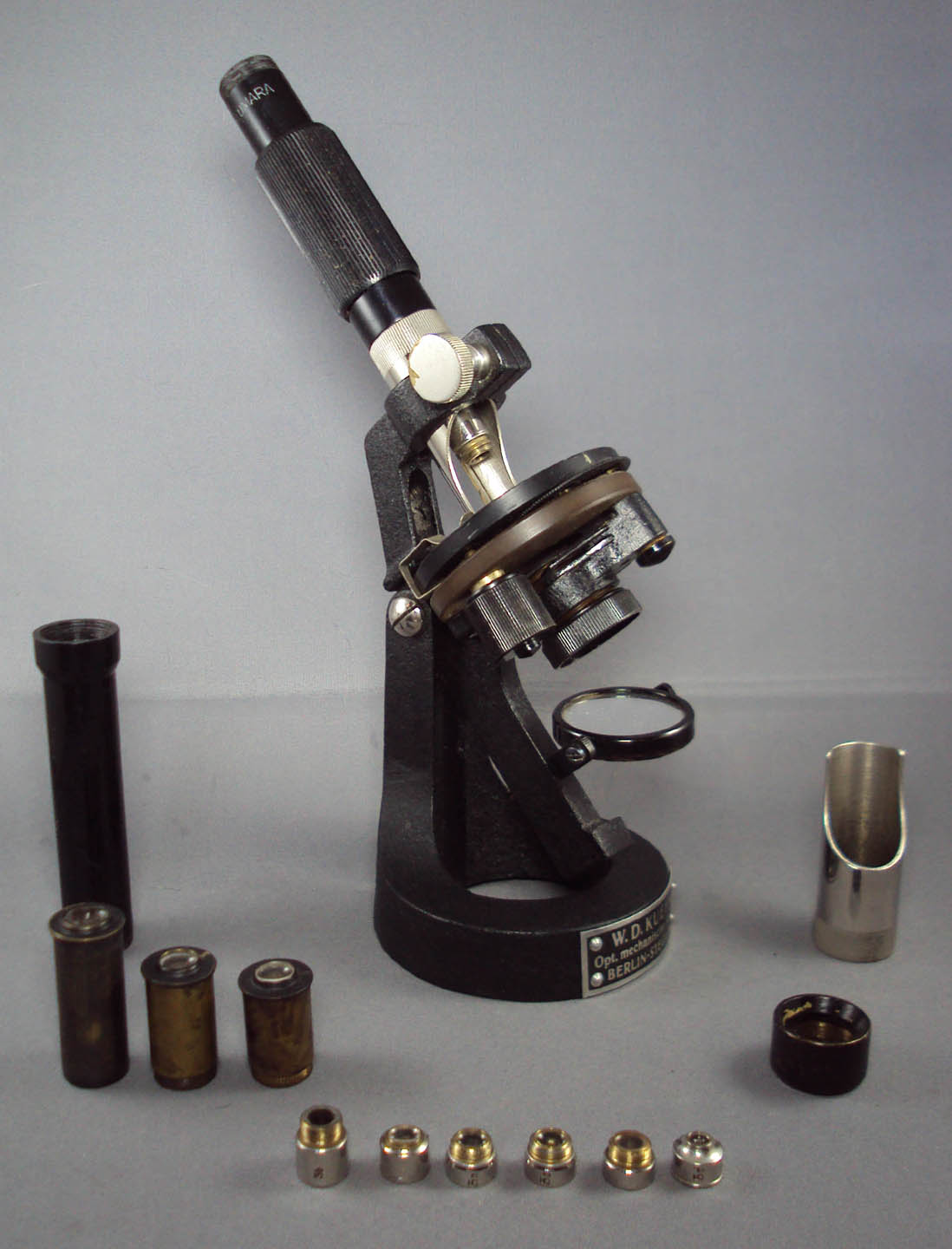
DESCRIPTION
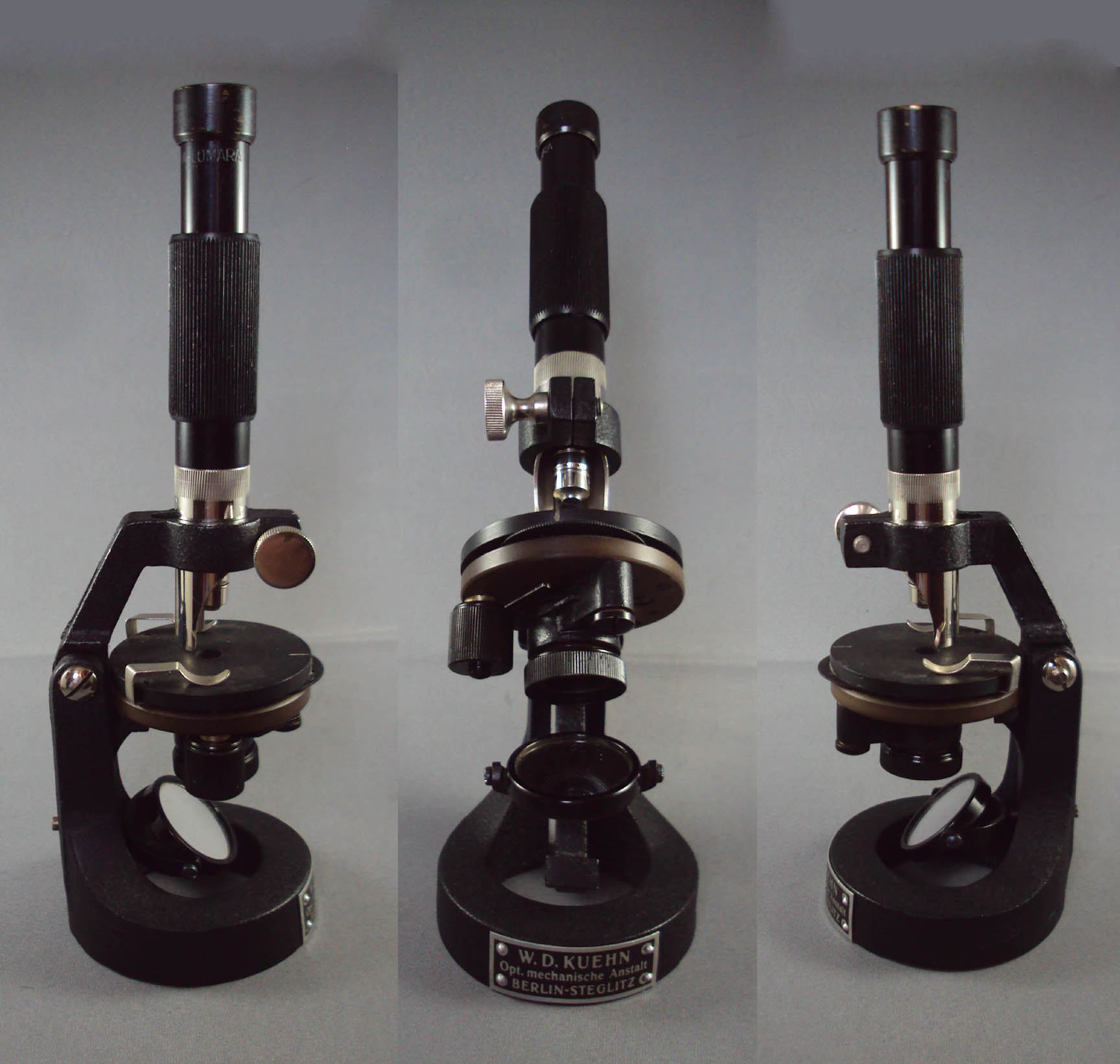
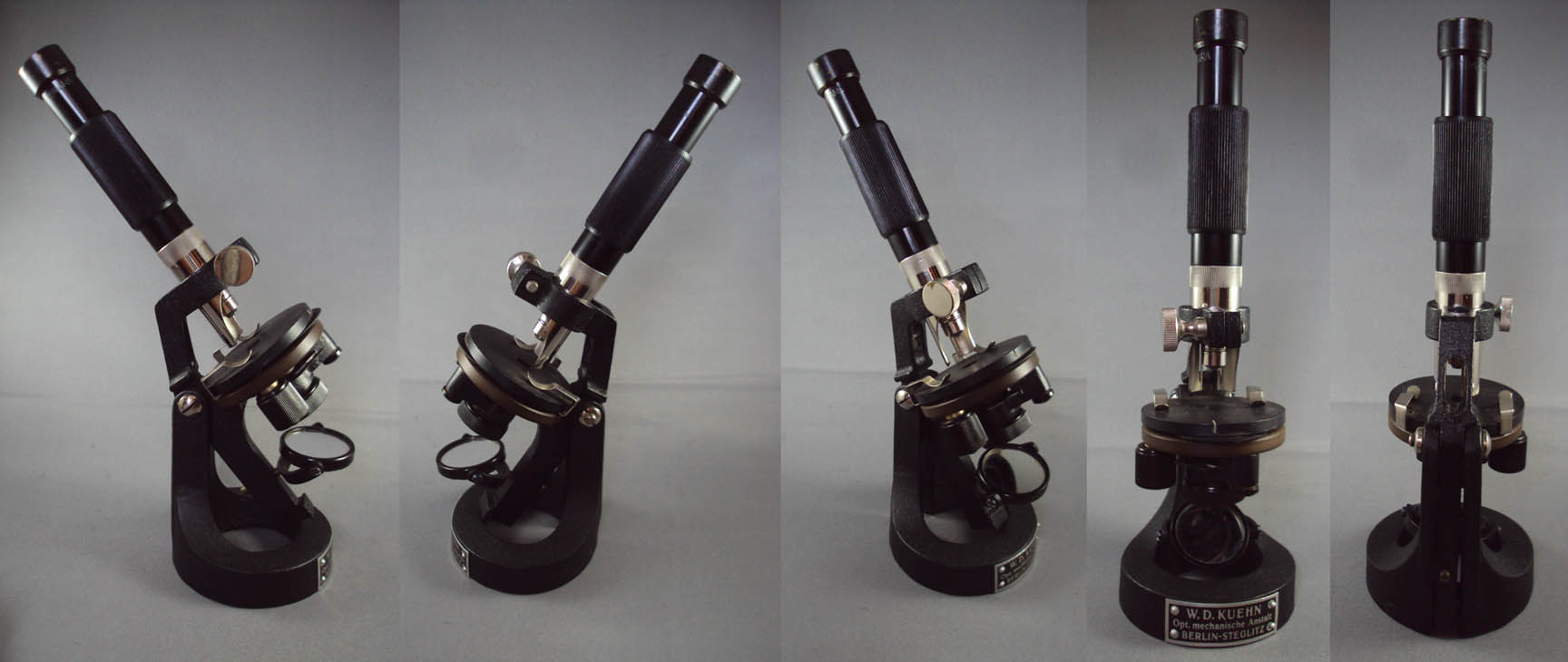

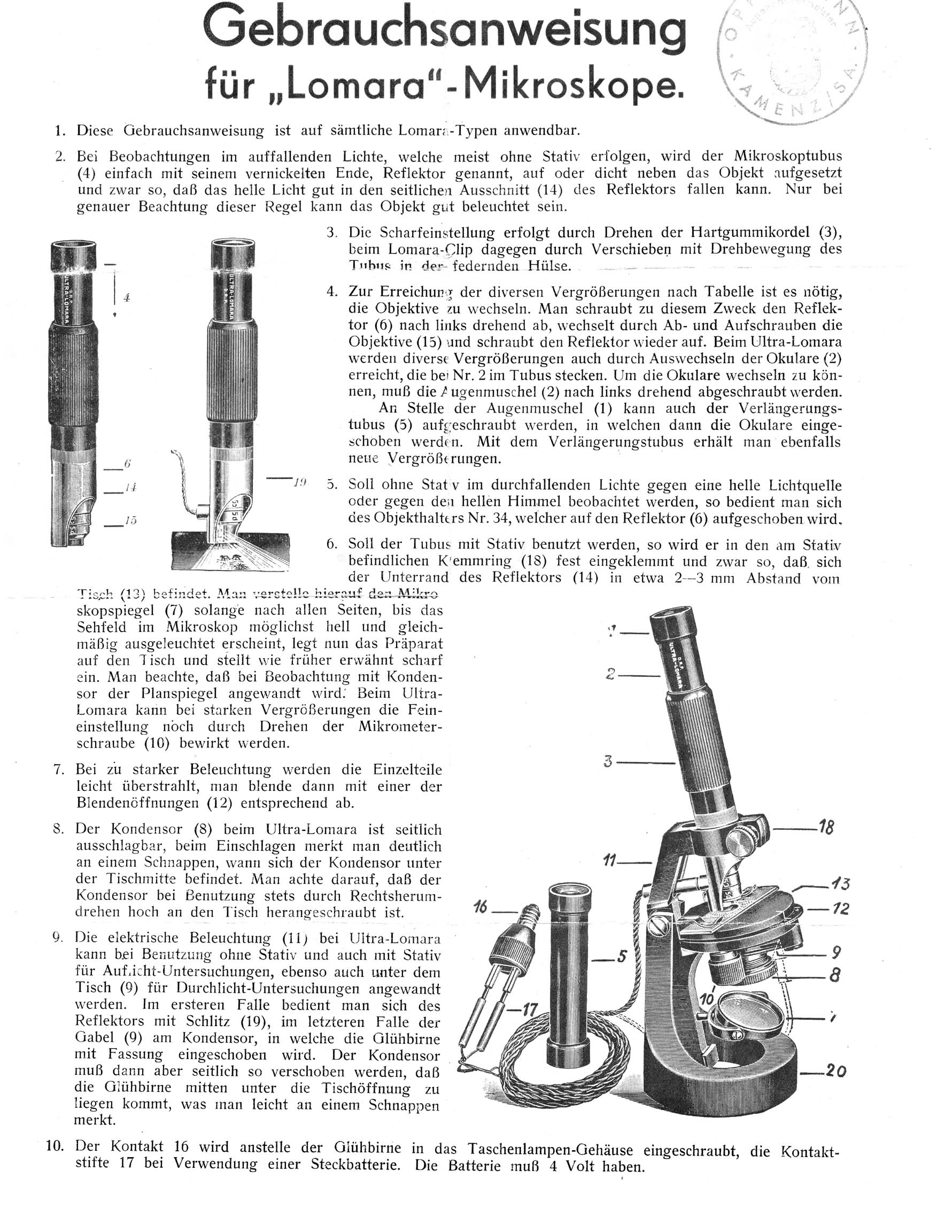 This is a small microscope intended for extreme portability. It was made by Goerz, but this example carries the
metal label of "W.D. KUEHN, Opt. mechanische Anstalt, BERLIN-STEGLITZ" riveted to the circular foot. The word Anstalt translates to 'institute' in English, but this was
a common term used in Germany for commercial entities which made (or sold?) technical equipment.
Accessories still with the instrument include:
This is a small microscope intended for extreme portability. It was made by Goerz, but this example carries the
metal label of "W.D. KUEHN, Opt. mechanische Anstalt, BERLIN-STEGLITZ" riveted to the circular foot. The word Anstalt translates to 'institute' in English, but this was
a common term used in Germany for commercial entities which made (or sold?) technical equipment.
Accessories still with the instrument include:
- Stacking objectives, the parts numbered
3a, 3b, 3c, 5a, 5b, 5c, and 5d; 3b and 5a have no optical elements.
- Two different 'hoods' which act as reflectors around the objectives;
one is a solid half circle, the other is similar but has a vertical slot to
accomodate a electric illuminator accesory
- an low voltage electric illuminator accessory which slides either onto a
hood for top illumination, or into a rail under the stage for transparent illumination
- Extension tube
- Three oculars, labelled '3','5' and '6'
- A magnification table
- Instructions in German
The stand itself features coarse focus by sliding the pen-microscope fitting up and down with a clamp
to secure it in position, a focusing mechanism by twisting on the optical tube, and fine focus by a knob acting
on the sprung stage tilting in on the right side. There is a round fitting to hold an ocular in place once selected.
There is a swing-out substage condenser with stops for out, in, or for alignment using the electric illuminator
alone in its place; this condenser is in a screw fitting permitting it to be focused by rotating it.
There is a wheel of apertures under the stage above the condenser. There is an inclination joint,
and two permanent stage clips. There were an additional two high power objectives, number 7 and number 9 which were options
but not included with the standard kits and are not present with this example. Without them, as shown on the magnification card, the maximum power was about
460X, about the same as the top of the line Wollensak microscope at that time, but much more expensive. The case shown
here differs from the more familiar case that looks like a case for binoculars.
HISTORY OF THE ULTRA-LOMARA MICROSCOPE
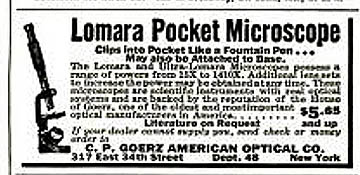
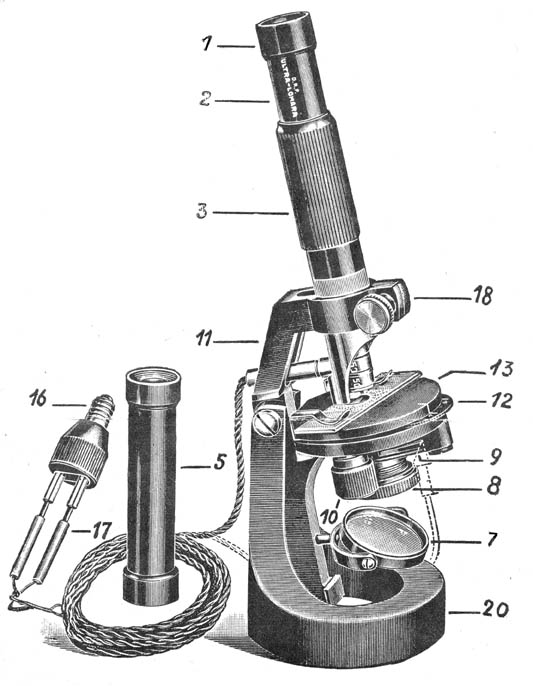
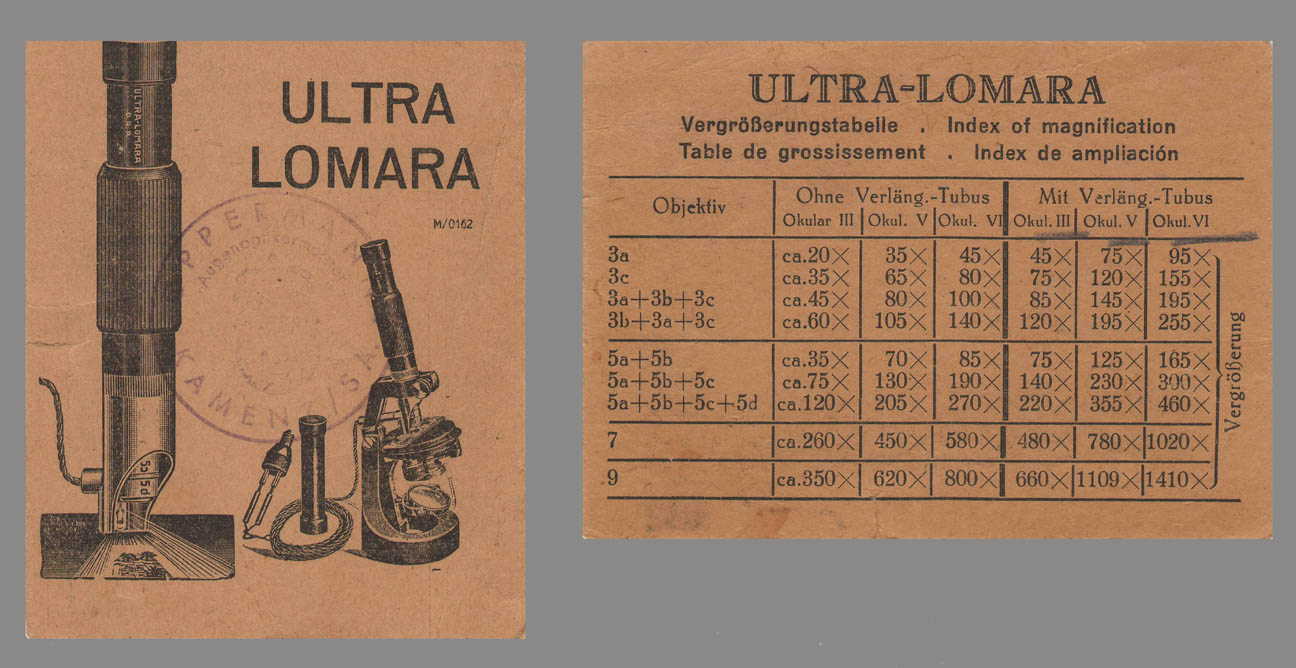 This microscope was one of many marketed as a highly portable unit, yet suitable for some
serious work. It was apparently made by Goertz of Germany which, as can be seen from the advertisement here, also called itself the Goertz American Optical Company in the U.S.A., implying it was an American enterprise, when in fact, it was a German company. My own opinion about this instrument is that it is inferior to many of the time. The heart of the instrument was the pen type microscope with a twisting focus made by the same company. This instrument was adapted to allow changeable stacking objectives and different eyepieces. A stand was produced to support the pen microscope and allow more detailed work.
Advanced features included electric lighting, fine focusing, variable apertures below the stage, and the substage condenser.
The difficulties in changing powers, its plastic extension tube, and its less than perfect focusing mechanisms make it difficult to use. Its chief advantages
were the variety of powers available, its ability to incline, and the other features mentioned above. Among its competitors were the Lietz Minor, the Tami, Metami, and Protami by Hensholdt, the Baby London by Beck, and others. Even the Wollensak
microscopes of the 1920's and 1930's would be competitive in this market, but much less expensive! Although advertisements touted a low price, this low price was only for a pen-microscope of single power. The price
for the complete outfit shown here in 1933 was RM 403 or over $100 which today would be over $400.
This microscope was one of many marketed as a highly portable unit, yet suitable for some
serious work. It was apparently made by Goertz of Germany which, as can be seen from the advertisement here, also called itself the Goertz American Optical Company in the U.S.A., implying it was an American enterprise, when in fact, it was a German company. My own opinion about this instrument is that it is inferior to many of the time. The heart of the instrument was the pen type microscope with a twisting focus made by the same company. This instrument was adapted to allow changeable stacking objectives and different eyepieces. A stand was produced to support the pen microscope and allow more detailed work.
Advanced features included electric lighting, fine focusing, variable apertures below the stage, and the substage condenser.
The difficulties in changing powers, its plastic extension tube, and its less than perfect focusing mechanisms make it difficult to use. Its chief advantages
were the variety of powers available, its ability to incline, and the other features mentioned above. Among its competitors were the Lietz Minor, the Tami, Metami, and Protami by Hensholdt, the Baby London by Beck, and others. Even the Wollensak
microscopes of the 1920's and 1930's would be competitive in this market, but much less expensive! Although advertisements touted a low price, this low price was only for a pen-microscope of single power. The price
for the complete outfit shown here in 1933 was RM 403 or over $100 which today would be over $400.
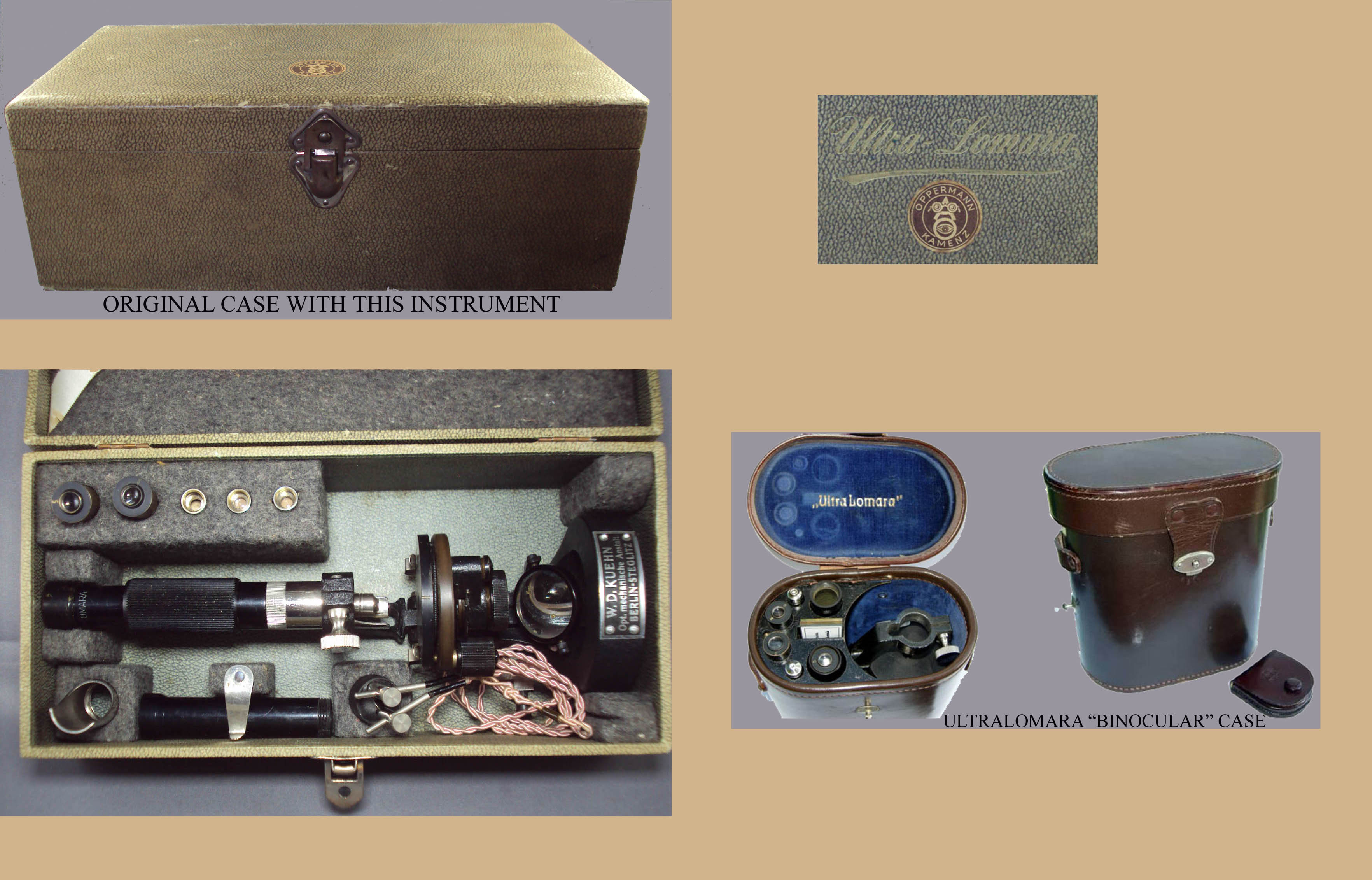



 This is a small microscope intended for extreme portability. It was made by Goerz, but this example carries the
metal label of "W.D. KUEHN, Opt. mechanische Anstalt, BERLIN-STEGLITZ" riveted to the circular foot. The word Anstalt translates to 'institute' in English, but this was
a common term used in Germany for commercial entities which made (or sold?) technical equipment.
Accessories still with the instrument include:
This is a small microscope intended for extreme portability. It was made by Goerz, but this example carries the
metal label of "W.D. KUEHN, Opt. mechanische Anstalt, BERLIN-STEGLITZ" riveted to the circular foot. The word Anstalt translates to 'institute' in English, but this was
a common term used in Germany for commercial entities which made (or sold?) technical equipment.
Accessories still with the instrument include:



